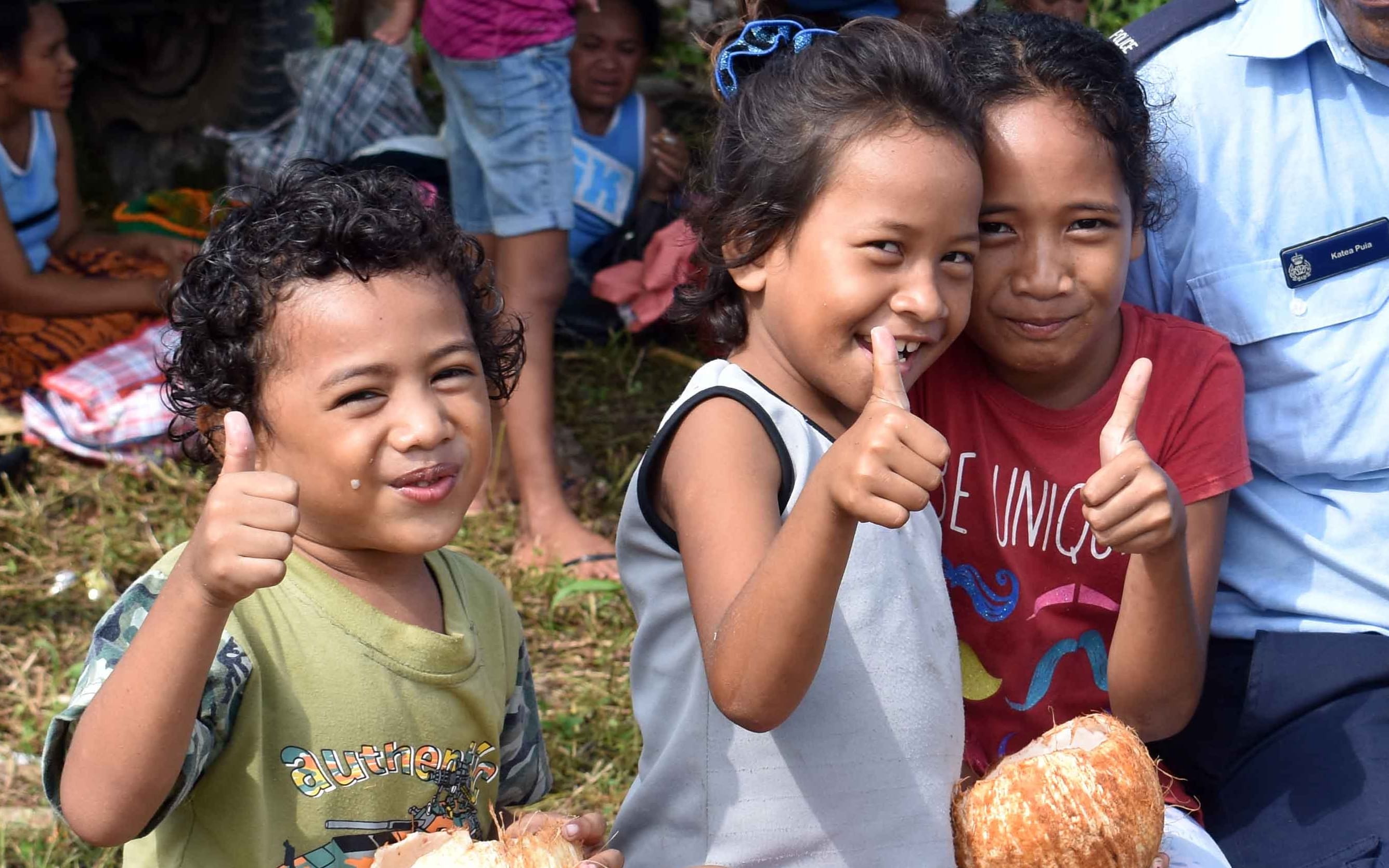Solomon Islands is included among 10 countries in the world with the most significant improvement in under five mortality rates between 2017 and 2018.
The UN children's agency, UNICEF, says five other Pacific countries also showed improvement over the past year in this area including Vanuatu, the Federated States of Micronesia, the Marshall Islands, Palau, and Nauru.
The agency's latest report into global child mortality says improvements are due to better antenatal care, increased immunisation rates, more government health spending and more coordination among donors.
The Solomon Islands Maternal and Child Health Specialist for UNICEF, Dr Ibrahim Dadari, told Jenny Meyer about what has helped more children survive.

Solomon Islands children
Photo: supplied
Transcript
IBRAHIM DADARI: We have been working very closely with the government to provide the necessary technical support and guidance. There's been significant coordination with other partners as well. But we feel specifically there's been an increase in immunisation rates. Particularly measles vaccine coverage has increased in recent years. We've introduced a number of new vaccines. Like PCV was introduced in 2015 and that vaccine protects against pneumonia. And pneumonia has been know to be one of the leading causes of child mortality in the Solomon Islands. So perhaps you could say the vaccines are working to reduce the influence of pneumonia and therefore reduce mortality. We've also been working in collaboration with other sectors concerning child protection issues. Antenatal care has been improving. We know nine out of ten women, pregnant women, they deliver with an attendent who is a skilled practioner like a health worker, a trained worker, a midwife.
JENNY MEYER: Have you got special things that you've done there to try and improve things for babies and the people who are caring for them at the start of life?
ID: Unicef's new country programme for the next five years from 2018-2022, one of our primary focus is the one thousand days approach. And the one thousand days looks at the antenatal, that is the nine months of pregnancy and the first three years of life. A lot of the interventions are also targetting neonatal mortality, strengthening newborn health and newborn care. Particularly essential early newborn care which happens within seven days, such as breast feeding, any initiation of breast feeding as we know is very important. Skin to skin contact, Kangaroo mothercare. And also protecting the mother from pregnancy with vaccines like tetanus toxoid can protect the baby also from having neonatal collapse and also its a cause of mortality. So we're working around all of this, strengthening these but also building the health worker capacity. I think we've invested in training a lot of health workers in the country at the provincial and those at the front line.
JM: I saw that last year you introduced for example a standard paediatric manual for health care workers.
ID: Yes that has also been significant. Because this paediatric standard treatment manual is one of the essential books or essential guides that front line health workers use particularly at rural health clinics and remote aid posts. This reinforces the training we are doing for health workers so they can now easily refer to the standard treatment protocols. And of course in addition to that we worked on the paediatric emergency algorithm as well. Because we identifies sometimes some of the causes of mortality, the kind of interventions that happen when there's an emergency, if you could flip the coin either way, "did I do the right thing" and the child survives, or do the wrong thing and the child does not survive. So the emergency algorithm for hospital health workers has also been very helpful in improving child survival.
To embed this content on your own webpage, cut and paste the following:
See terms of use.


